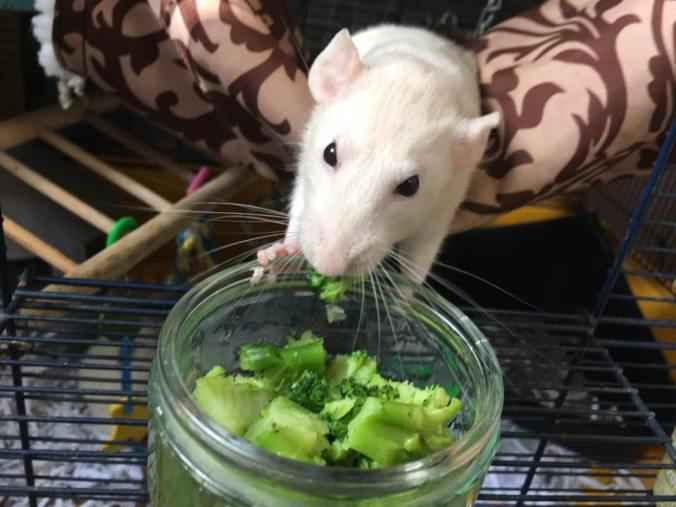Food Safe for Rats to eat
Aduki beans
Apple (pips removed)
Apricots (no stone)
Asparagus
Aubergine (eggplant)
Avocado (flesh only, no skin or stone)
Bamboo
Banana
Bean sprouts
Beetroot
Blackberries
Blackcurrant’s
Blueberries
Bok choy (Pak choi)
Broad beans (canned or cooked)
Broccoli
Brussels sprouts (Cooked only)
Butternut squash
Canneletti beans
Carrots
Cauliflower
Celeriac
Celery
Cherries (without stone)
Chick Peas (soaked, canned or cooked)
Chicory
Coconut
Courgette (Zucchini)
Cranberries
Cress
Cucumber
Dandelion leaves
Dates
Eggplant (Aubergine)
ALSO SEE: Why Pet Rats Bury Food

Figs (small amount)
Gala melon
Garlic
Grapes
Green beans (cooked)
Honeydew melon
Jerusalem artichokes
Kale (curly)
Kidney beans (cooked only)
Kiwi (small amounts, without skin)
Leek * (small amount)
Lettuce (in moderation)
Mange tout
Mango (girls only)
Melon
Mushrooms
Nectarines (girls only)
Olive
Onion * (small amount)
Orange (small amount only for the girls)
Pak choi (bok choy)
Papaya
Parsnips
Peach (no stone)
Peas (frozen or fresh)
Pears
Peppers (all colors)
Persimmon (sharon fruit)
Physalis (chinese lantern fruit)
Pineapple
Plums (without stones)
Pomegranate
Pomelo (girls only)
Potato (cooked)
Prunes
Pumpkin (cooked)
Radish
Raisins
Raspberries
Red Onion * (small amount)
Rocket
Savoy cabbage
Sharon fruit (Persimmon)
Soy beans (must be cooked)
Spring greens (spring cabbage)
Spring onion * (small amount)
Spinach
Strawberries
Swede
Sweet corn (frozen or fresh, on cob or off)
Sweet peppers
Sweet potato
Sugar snap pea
Tomato
Turnip
Water chestnuts
Watercress
Watermelon
Zucchini (Courgette)




Leave a Reply
You must be logged in to post a comment.